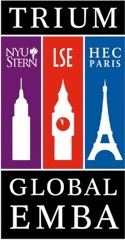enter wining: turning off the stress of choosing a wine for dinner
 Saturday, September 12, 2009 at 6:26PM
Saturday, September 12, 2009 at 6:26PM Someone asked a great question on LinkedIn about creating a great customer experience around wine choices at a luxury hotel catering to a global clientele.
It got me thinking about the peak-end framework I use in CEM, and also about wine, which is one of my passions. My motto: where your customer's desired experience intersects with your brand's value is your opportunity; where your delivered experience intersects with a profitable model is your success. So, can you get people to buy wine with less regard to price? Even in a non-luxury situation? Here's what I think. Chime in, folks.
desired experience
Different people drink wine for different reasons. At some basic level there should be a range of wines to match the food, in a range of prices. After this, you'll want to segment your customers according to the way people relate to wine and the discovery of new wines. With these segments in mind, then ask: what are our brand values? At the intersection of the desired experience and the brand is where your opportunity lies.
For example, let's say there are two segments: I drink by country of origin; or I am scared to try new wines but know a few that I like.
Of course, you'll have more segments than this. But stick with me.
Let's also say that your branded experience is: delicious, surprising meals served by people who want to give you pleasure.
country of origin
For country-of-origin folks ("I drink wines from FRANCE and ARGENTINA"), you might organize your list this way - or even better, since "surprise" is in your brand values, organize your list by flavor profile but always mark an entry with wines/regions for the given wine AND COMPATIBLE wines and regions. For example, if an entry for a Bordeaux is marked France, you might also say: "Other compatible wines on our list: 427 from South Africa, 19 from Sonoma Valley, 231 from Spain."
For "I don't know about wine and I'm afraid to try new ones," you can use a similar technique. Use a flavor profile icon (say, in red for reds, blue for whites and pink or rose), perhaps a pie chart or some bars, which show body, acid, fruit, terroir. (The last is a bit arbitrary, but loosely might be translated as "good with food from the region, may not be perfect as a stand-alone wine.")
At the very list these two approaches can give you a quick database for organizing your list; it can also aid in staff training. AND ... if you can get the customer to give you an EMAIL address, you can ask how they liked their wine, and then EMAIL them with similar wines, pulled right from your database. Include a couple of simple, delicious recipes (yank them from Epicurious, doesn't matter as long as the dishes work with the wine).
peak-end
From a customer experience management standpoint, this leverages Kahneman's peak/end model for memory drivers. The end of the branded experience is not when the check comes. It's when the EMAIL comes. And you can bet they'll remember you. And talk about you. And they might even try that recipe and wine that you recommended, and do you think they'll be talking about your restaurant during the entire meal?
You bet.




Reader Comments